
2018年11月30日 星期五
Mount Everest Star Trails

JPL Needs A Twitter Fact Checker
Hey @NASA_JPL and @NASA - your chart says that the Viking landers were solar powered. Wrong. They had plutonium-238 RTGs. https://t.co/wbVvmYvnJx
— NASA Watch (@NASAWatch) December 1, 2018
from NASA Watch https://ift.tt/2RrgAID
via IFTTT
NASA Awards Optical Telescope Assembly for Wide Field Infrared Survey Telescope Mission
November 30, 2018
from NASA https://ift.tt/2E7pI27
via IFTTT
A 'BrainStorm Trooper' Inquires About NASA Exploration

ISS Daily Summary Report – 11/29/2018
November 30, 2018 at 12:00AM
from NASA https://ift.tt/2Pal9oU
via IFTTT
2018年11月29日 星期四
A Cold River to Orion
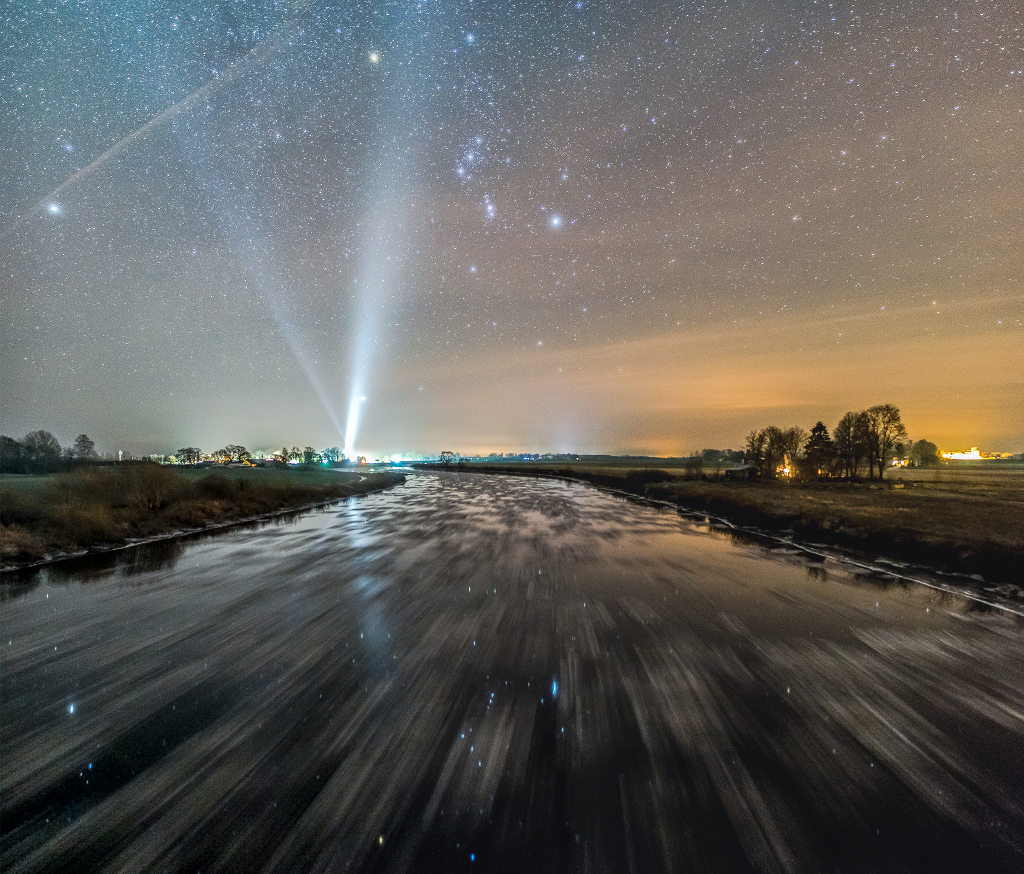
Doing Something Again For The First Time
Keith's note: I first published this exactly one year ago. Listening to all of the talk about going (back) to the Moon - and asking for a show of hands in the audience at NASA HQ for those who saw it live - I thought I'd give Jim Bridenstine something to think about.
Keith's original 28 November 2017 note: There is a lot of talk these days about yet another pivot in America's civilian space policy. This time it is "back" to the Moon. Mars is not off the agenda - but it is not moving forward either. Personally I think we have unfinished business on the Moon and that creating a vibrant cis-lunar space infrastructure is the best way to enable humans to go to many places in the solar system - including Mars. Regardless of your stance on this issue, a common refrain about going back to the Moon - starting with President Obama is that "We've been there before".
Humans first reached the South Pole by an overland route in 1911/1912. While we visited the pole by plane in the intervening years, no one traversed Antarctica's surface again until 1958. 46 years between Antarctic polar traverses. Why did we go back to do something - again - in a similar way - to a place "we've been [to] before" after 46 years? Because there was still something of interest there - something we'd only had a fleeting exposure to - and we had developed new ways to traverse polar environments. James Cameron revisited the Challenger Deep in 2012 - after a human absence of 52 years. Why? See above. It is understandable that explorers seek to explore new places and not redo what has been done before. There is only so much funding and there are still so many places yet to be explored. But it is also not uncommon for explorers to revisit old, previously visited locations with new tools - and new mindsets.
Look at the stunning imagery Juno is sending back of Jupiter. Compare that to what we got from Galileo - and Voyager - and Pioneer. Why send yet another mission to the same destination unless, well, you have better tools - tools that enable the pursuit of ever greater exploration goals.
I was 15 when humans first walked on the Moon. The generations who have followed mine have never seen humans land and walk on the Moon. Indeed a lot of them seem to think it never happened. But American space policy is made by Baby Boomers (and older) population cohorts so we just operate on our own biases i.e. been there, done that.
Take a look at the chart below. More than half of the Americans alive today never saw humans walk on the Moon - as it happened - including the person slated to become the next administrator of NASA and the entire 2013 and 2017 astronaut classes. If/when we go back to the Moon in the next 5-10 years this number will increase. For them these future Moon landings will be THEIR FIRST MOON LANDINGS. That's several hundred million Americans waiting to see what I saw in 1969.
Just sayin'
from NASA Watch https://ift.tt/2RtBoPX
via IFTTT
That NASAWatch Guy
Keith's note: I still can't stop laughing at this one. I am really rocking the gray hair, reader glasses, nonchalant slouching journalist slob thing! As for the other guy ...
.@JimBridenstine meets @NASAWatch 🔥 pic.twitter.com/UzO20KzTRW
— Michael Baylor (@nextspaceflight) November 29, 2018
from NASA Watch https://ift.tt/2E1PRze
via IFTTT
NASA Announces New Partnerships for Commercial Lunar Payload Delivery Services
November 29, 2018
from NASA https://ift.tt/2TXMNsz
via IFTTT
Its Back To The Moon Time - Again
NASA Announces New Partnerships for Commercial Lunar Payload Delivery Services
"Nine U.S. companies now are eligible to bid on NASA delivery services to the lunar surface through Commercial Lunar Payload Services (CLPS) contracts, as one of the first steps toward long-term scientific study and human exploration of the Moon and eventually Mars. These companies will be able to bid on delivering science and technology payloads for NASA, including payload integration and operations, launching from Earth and landing on the surface of the Moon. NASA expects to be one of many customers that will use these commercial landing services."
from NASA Watch https://ift.tt/2Q7GAfK
via IFTTT
NASA TV to Air Next International Space Station Crew Launch, Docking
November 29, 2018
from NASA https://ift.tt/2KIa39U
via IFTTT
Hubble Explores the Coma Cluster's More Than 1,000 Galaxies

ISS Daily Summary Report – 11/28/2018
November 29, 2018 at 12:00AM
from NASA https://ift.tt/2KFGsOl
via IFTTT
2018年11月28日 星期三
Across Corona Australis
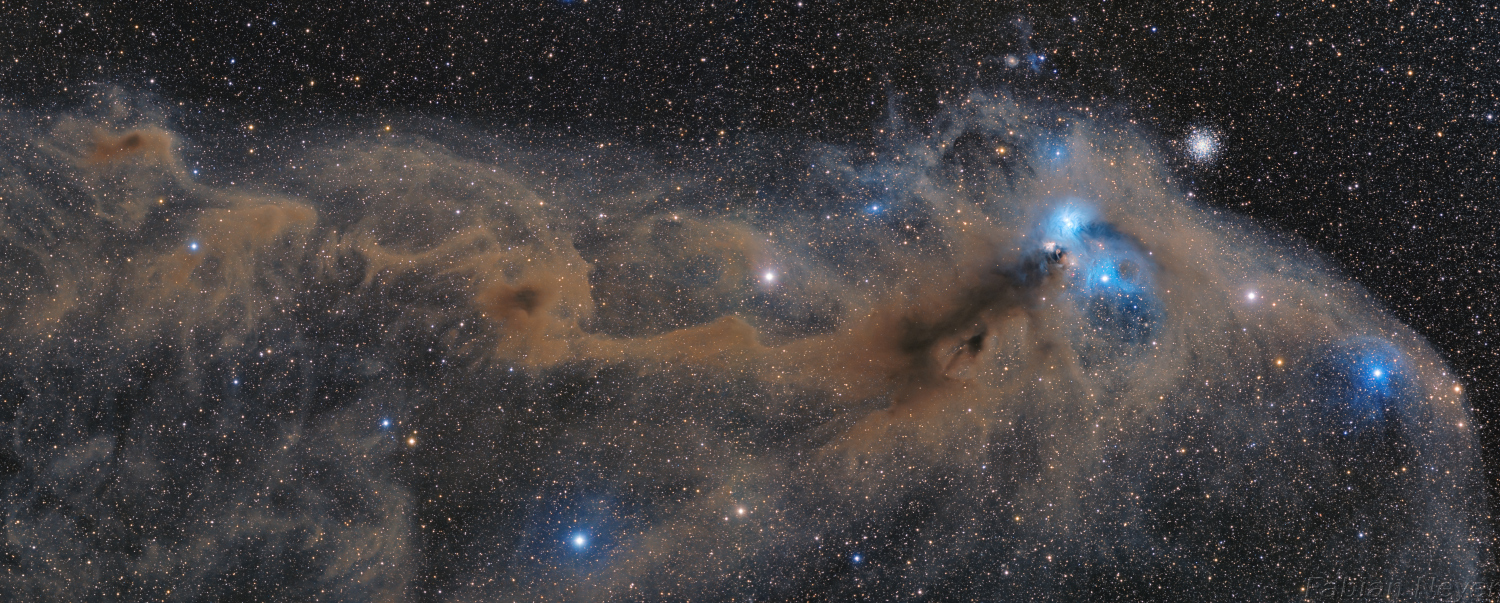
Space Force Comes In Many Flavors At Varying Costs
White House Seeks Alternatives to Independent Space Force, Defense One
"The four options, according to one of the officials, include: 1) an Air Force-owned space corps that includes only Air Force assets, 2) an Air Force-owned space corps that also takes space-related troops and assets from the Army and Navy, 3) an independent service that takes from the Air Force, Army, and Navy, and 4) an independent service that takes from the three services plus parts of the intelligence community."
The creation of a Space Force would cost less than $3 billion, according to a new report, Washington Post
"President Trump's Space Force, a proposed military department dedicated to fighting war in space, would cost the Pentagon $1.5 billion to $2.7 billion in additional money over five years, according to a study released this week by the Center for Strategic and International Studies, a Washington think tank. That estimate is far below the $13 billion price tag that Air Force Secretary Heather Wilson recently reported to Pentagon leaders and is certain to fuel the debate over the cost and necessity of what would become the first new military service branch since the Air Force was created in 1947. While the White House has pushed aggressively for the establishment of the Space Force, which Trump has championed in rallies, a new military department would need to be approved by Congress. It is unclear whether there is enough support for it to pass."
from NASA Watch https://ift.tt/2KFIxK7
via IFTTT
NASA Provides Live Coverage of Spacecraft Arrival at Asteroid That May Have Answers to the Origin of our Solar System
November 28, 2018
from NASA https://ift.tt/2DOs8Sk
via IFTTT
NASA Television to Air Launch of Next Space Station Resupply Mission
November 28, 2018
from NASA https://ift.tt/2rc84BC
via IFTTT
NASA Awards Employee Relocation Services Contract
November 28, 2018
from NASA https://ift.tt/2raiXUL
via IFTTT
After the Success of InSight, It’s Time for NASA to Commit to Mars Sample Return
from Planetary Society Blog https://ift.tt/2AzA0Uj
via IFTTT
The Sort of Status Report People Might Send Back From Mars
Astrobiologist Dale Andersen Antarctic Status Report 28 November 2018: Dive Hole Melting Issues
"The hole melter was returned, but unfortunately it still does not work properly and we are unable to use it to make a dive hole or melt out the light sensors we left in the water column last year. And while I am disappointed we will not be working underwater, we have moved on to other important areas of work that will occupy our time during the next two weeks. Over the last several days we drilled additional holes in the south basin as part of an effort to increase the accuracy of the bathymetry map for the lake, and to make measurements of ice-thickness; the ice-thickness data are to be used to model variations in ablation across the lake. We also used one hole to obtain samples with an Ekman dredge from the deepest point (100 m) in the south basin. These samples are currently having DNA and RNA extracted and preserved for genomic studies that will take place in the coming months and other subsamples are being preserved for additional geochemical analyses as well."
Keith's note: Dale Andersen and I worked together at the old NASA HQ Life Science Division in the 1980s. He and I have been reporting from/about remote polar and alpine regions for more than 30 years - Dale much more than I. Indeed, we think that we may well have had the first webserver in the U.S. directly updated from Antarctica back in 1997 - that website is still online here. You might find "How We Built This Website" of interest given the way such things are done today. Alas, other than my Astrobiology.com website and the SETI Institute, NASA's Astrobiology outreach people totally ignore this on-going research.
from NASA Watch https://ift.tt/2TQq6Xo
via IFTTT
The Dunes in Mars' Wirtz Crater

ISS Daily Summary Report – 11/27/2018
November 28, 2018 at 12:00AM
from NASA https://ift.tt/2zuWRRj
via IFTTT
2018年11月27日 星期二
IC 1871: Inside the Soul Nebula
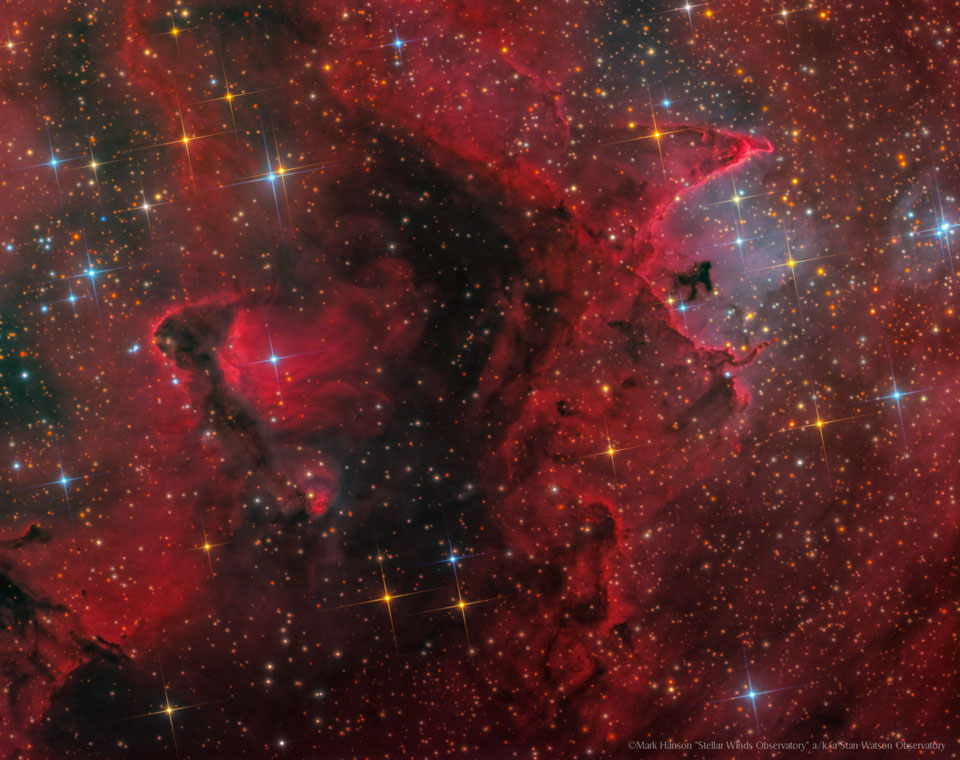
NASA Awards Launch Range Operations Services Contract
November 27, 2018
from NASA https://ift.tt/2TQR15u
via IFTTT
Janet Karika Announced As New NASA Chief of Staff
I'm honored to welcome Janet Karika as my Chief of Staff. Her 38 years of space experience will serve the agency well. I'd like to thank Tom Cremins for doing an outstanding job as my Acting Chief of Staff. It's an exciting time at NASA, and I'm very thankful for our team. pic.twitter.com/79pflMbYcy
— Jim Bridenstine (@JimBridenstine) November 27, 2018
from NASA Watch https://ift.tt/2TRrf0L
via IFTTT
NASA Administrator to Announce New Moon to Mars Partnerships with US Companies
November 27, 2018
from NASA https://ift.tt/2FH50aZ
via IFTTT
ISS Daily Summary Report – 11/26/2018
November 27, 2018 at 12:00AM
from NASA https://ift.tt/2PUHKLj
via IFTTT
Ringing in InSight's Landing on the Red Planet

New Cameras on Mars!
from Planetary Society Blog https://ift.tt/2TPlDnN
via IFTTT
2018年11月26日 星期一
InSights First Image from Mars
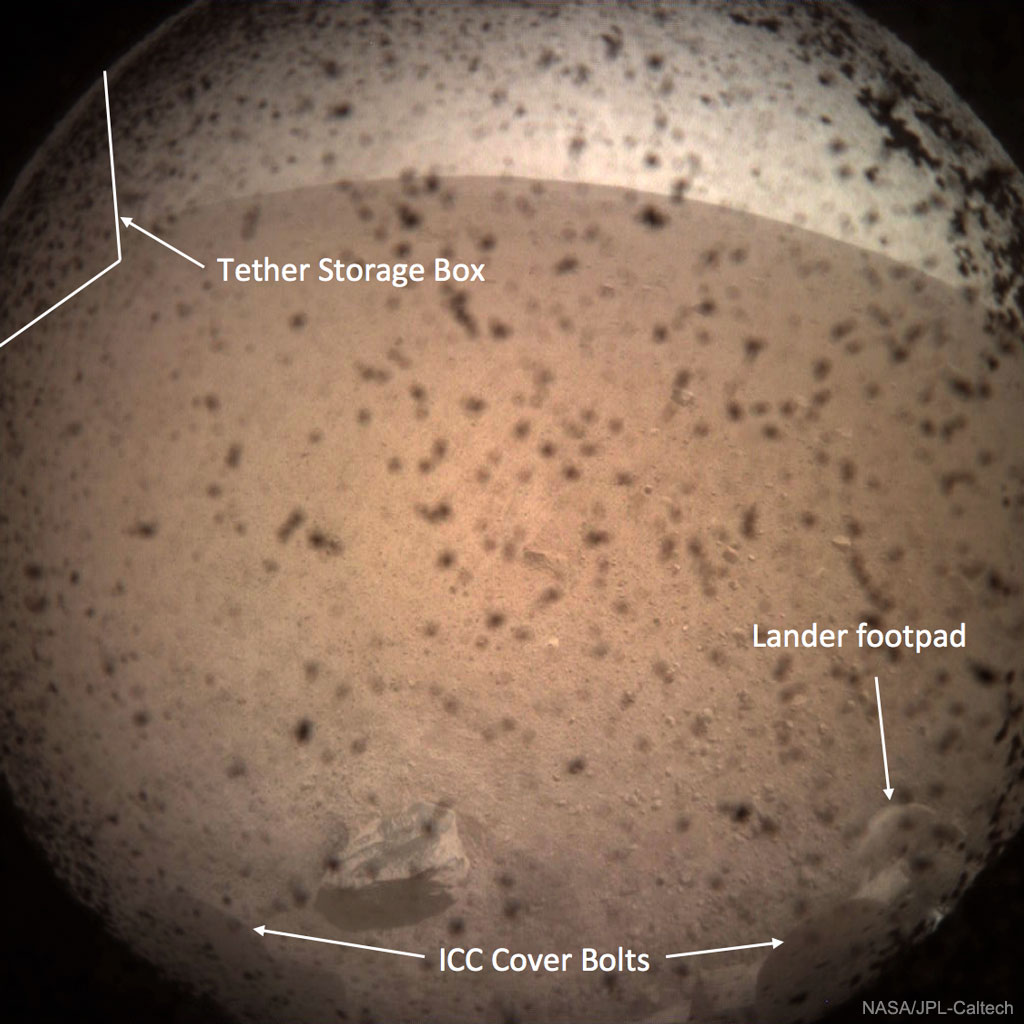
White House Confusion Over How NASA Actually Functions
FYI @NASAInSight was approved by @NASA in 2012, built in 2014-2015 and almost flew to Mars in 2016 but was delayed until 2018 due to problems with the French-built seismometer - all before @RealDonaldTrump became president @NASA did not need to be "reawakened". Just sayin' https://t.co/yotSC2P5pT
— NASA Watch (@NASAWatch) November 26, 2018
from NASA Watch https://ift.tt/2DZf1Pe
via IFTTT
NASA InSight Lander Arrives on Martian Surface to Learn What Lies Beneath
November 26, 2018
from NASA https://ift.tt/2QkbTmv
via IFTTT
InSight has landed
from Planetary Society Blog https://ift.tt/2zp83Ph
via IFTTT
InSight Makes A Perfect Landing On Mars
First image after #MarsLanding pic.twitter.com/pkwpyaBJ1q
— NASA Watch (@NASAWatch) November 26, 2018
from NASA Watch https://ift.tt/2Ql4jIq
via IFTTT
InSight and MarCO, New Technologies Headed for the Red Planet

2018年11月25日 星期日
Rocket Launch as Seen from the Space Station

Vostochny Spaceport Has A Few Criminal Issues
Criminal cases opened into $150mln violations at Vostochny spaceport, TASS
"Russia's investigators have launched more than 140 criminal cases into violations during the construction of the Vostochny spaceport in Russia's Far East, and the total damage is valued at 10 bln rubles ($152.3 mln), Official Spokesman for the Russian Prosecutor-General's Office Alexander Kurennoy said. "Since 2014, more than 140 criminal cases have been opened, and the damage was assessed at 10 bln rubles," Kurennoy said in an interview with the Efir Internet channel of the Russian Prosecutor-General's Office. According to the spokesman, 50 individuals have been sentenced, and this year sentences for 27 people were announced. The prosecutors have revealed 17,000 law violations during the construction since 2014. More than 1,000 people have been held accountable, including officials. Among the violations were delayed construction, multibillion embezzlement of state funds and the administration's negligence."
Man Driving Diamond-encrusted Mercedes Caught Embezzling Cosmodrome Funds, earlier post (2015)
"Alleged to have embezzled four million roubles, video of arrest shows him driving diamond-encrusted Mercedes. A senior director suspected of embezzling funds from the construction of the new Vostochny cosmodrome has been arrested after going on the run."
from NASA Watch https://ift.tt/2r6o8oG
via IFTTT
2018年11月24日 星期六
Phobos: Doomed Moon of Mars
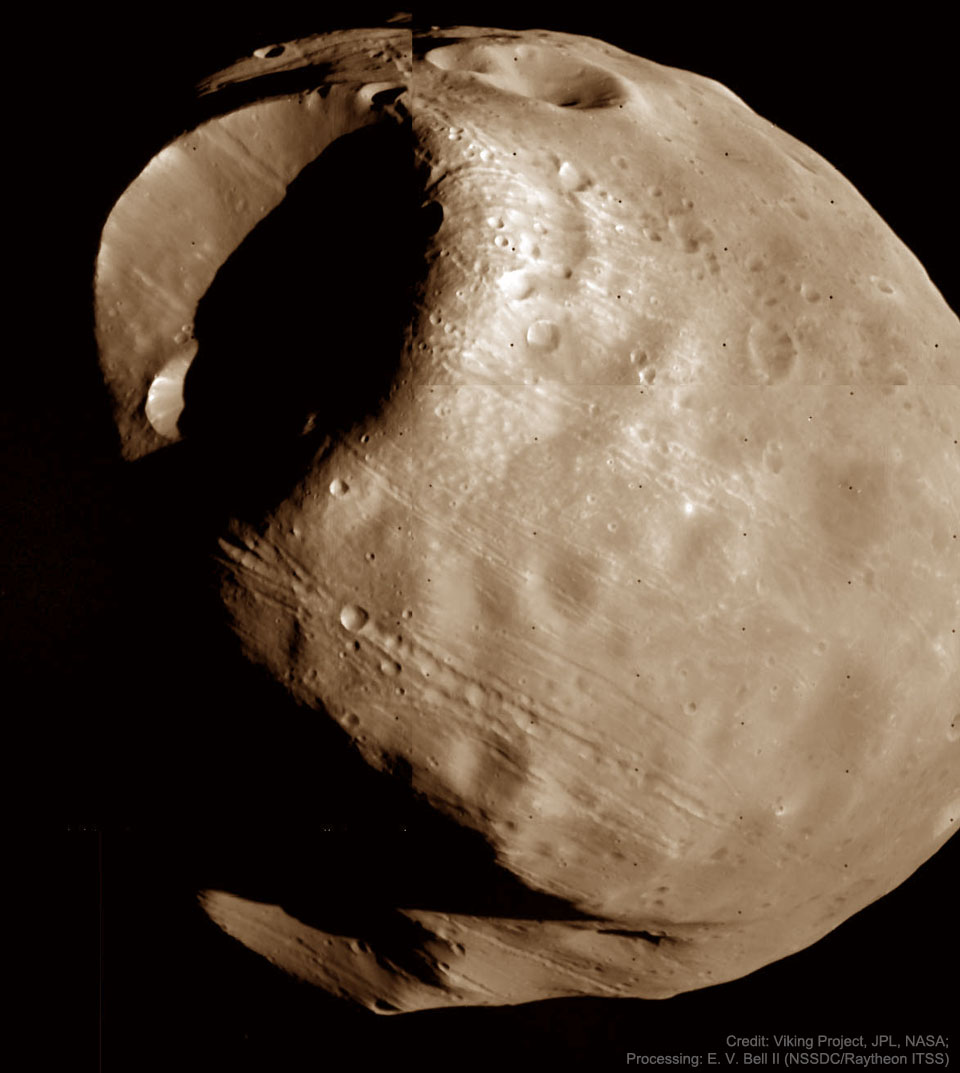
NASA Leaves Broken Social Media Online
Here we go again. The official @NASA DSN twitter account says that it is receiving data from #Mars Rover #Opportunity but its probably not true since you can't trust #NASA social media accounts to be accurate any more according to @NASAJPL PAO. But they leave these things online. https://t.co/iKNb1gJi6l
— NASA Watch (@NASAWatch) November 25, 2018
from NASA Watch https://ift.tt/2PS28N5
via IFTTT
Climate Change Report Sneaks Out Before It Could Be Stopped
Fourth National Climate Assessment, Volume II: Impacts, Risks, and Adaptation in the United States, U.S. Global Chance Research Program
"In the absence of significant global mitigation action and regional adaptation efforts, rising temperatures, sea level rise, and changes in extreme events are expected to increasingly disrupt and damage critical infrastructure and property, labor productivity, and the vitality of our communities. Regional economies and industries that depend on natural resources and favorable climate conditions, such as agriculture, tourism, and fisheries, are vulnerable to the growing impacts of climate change. Rising temperatures are projected to reduce the efficiency of power generation while increasing energy demands, resulting in higher electricity costs. The impacts of climate change beyond our borders are expected to increasingly affect our trade and economy, including import and export prices and U.S. businesses with overseas operations and supply chains. Some aspects of our economy may see slight near-term improvements in a modestly warmer world. However, the continued warming that is projected to occur without substantial and sustained reductions in global greenhouse gas emissions is expected to cause substantial net damage to the U.S. economy throughout this century, especially in the absence of increased adaptation efforts. With continued growth in emissions at historic rates, annual losses in some economic sectors are projected to reach hundreds of billions of dollars by the end of the century--more than the current gross domestic product (GDP) of many U.S. states."
Ranking Member Johnson Statement on Vol. II of the Fourth National Climate Assessment Report
"This report provides the most comprehensive look at the effects of climate change on the United States ever, and the results, as we've sadly grown accustomed to, are quite terrifying - increased wildfires, more damaging storms, dramatic sea level rise, more harmful algal blooms, disease spread, dire economic impacts, the list goes on and on. That being said, all hope is not lost, but we must act now. We have to reduce greenhouse gas emissions, work on adaptation and mitigation, and explore technology solutions such as geoengineering and carbon capture and sequestration. That is why I have made climate change one of my top priorities for the Committee going in to the next Congress."
Keith's note: Although NASA participated in this study and provided much of the underlying data for its observations and recommendations, NASA.gov has not posted any commentary or reference to this report. To be fair, the report was released on the day after Thanksgiving when a large number of people were not paying any attention to the news due to the fact that they took the day off. Sometimes releasing a controversial report on a day like this is a good way to bury things that will be controversial. Other times it is the best way to sneak a report out before it can be held back. Usually it is a bit of both.
from NASA Watch https://ift.tt/2R67XTE
via IFTTT
2018年11月23日 星期五
Shipwreck at Moonset
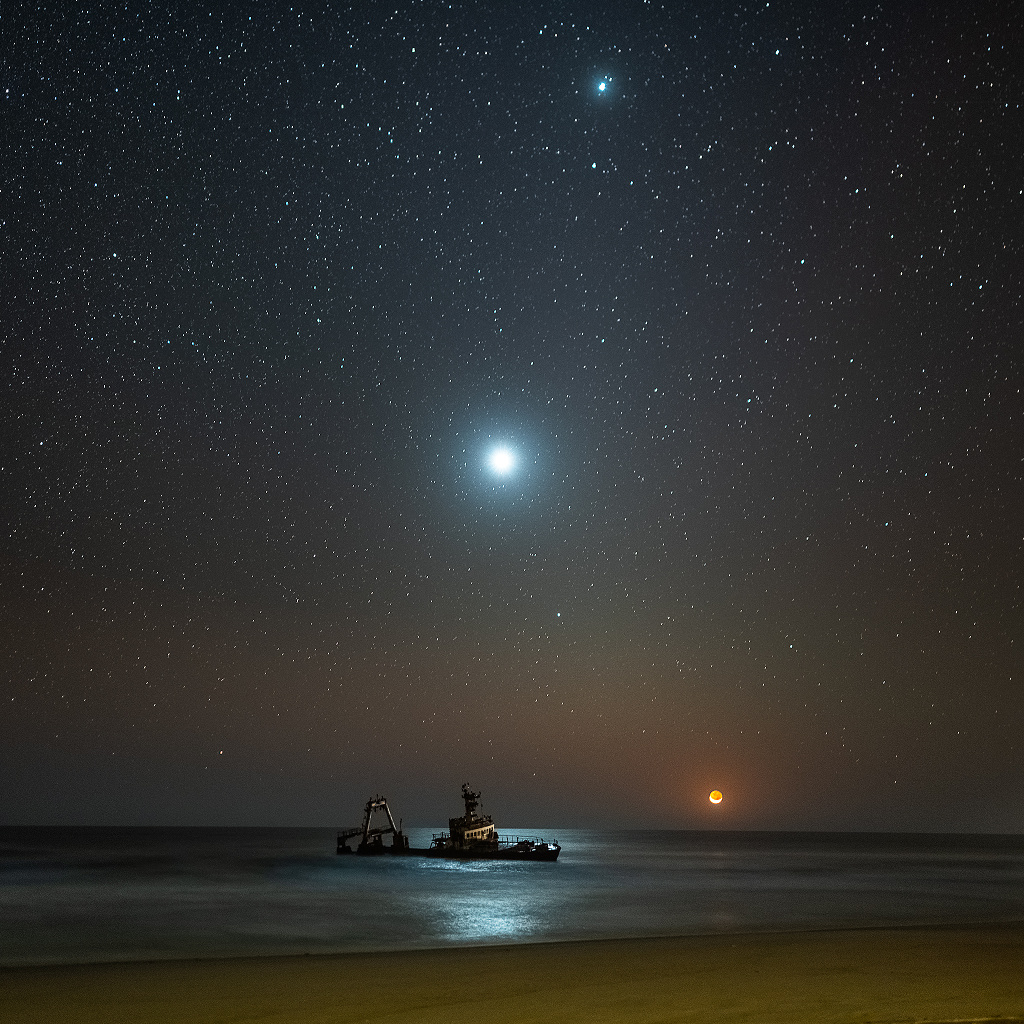
NASA Highlights Science on Next Resupply Mission to International Space Station
November 23, 2018
from NASA https://ift.tt/2KtWpHk
via IFTTT
Gift Ideas From Space Enthusiasts For Space Enthusiasts
from Planetary Society Blog https://ift.tt/2QcCoum
via IFTTT
2018年11月22日 星期四
Good Morning Leonid
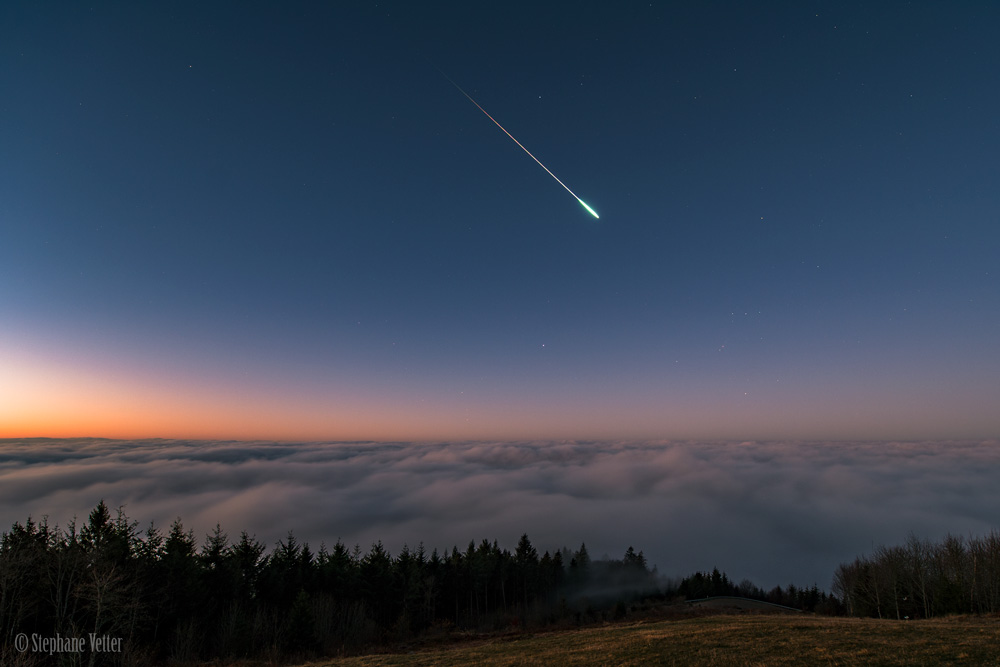
Looking Forward, Not Backward
FWIW @NASA needs to stop acting like it is 60 years old and reliving the glories of what it did 50 years ago. Instead it needs to look forward (again) as it did in the 1960s with the eyes of a child. No limits. No preconceptions.
— NASA Watch (@NASAWatch) November 22, 2018
from NASA Watch https://ift.tt/2TBe3wT
via IFTTT
2018年11月21日 星期三
Portrait of NGC 281
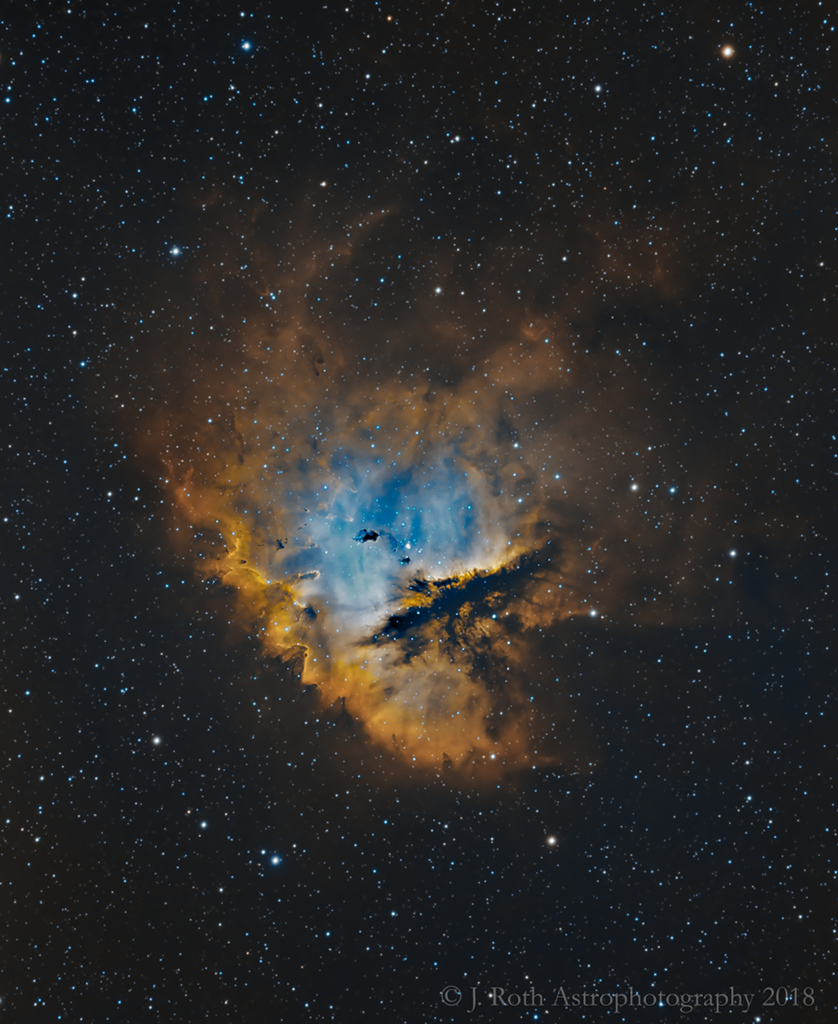
ISS Daily Summary Report – 11/20/2018
November 21, 2018 at 12:00AM
from NASA https://ift.tt/2BpkEn6
via IFTTT
Exploding Stars Make Key Ingredient Found in Glass

NASA Invites Media to SpaceX Demo-1 Launch
November 21, 2018
from NASA https://ift.tt/2R303KM
via IFTTT
2018年11月20日 星期二
Swirls and Colors on Jupiter from Juno
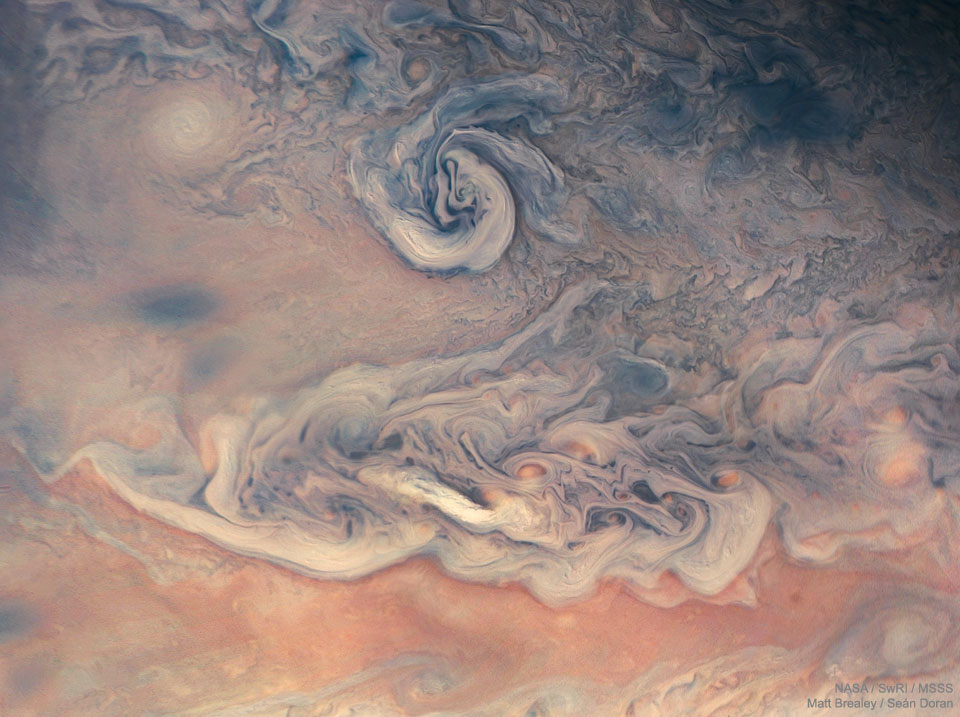
NASA Mounts Weed-Inspired Witch Hunt at SpaceX and Boeing
NASA concerned about culture of "inappropriateness" at SpaceX, Ars Technica
"In addition to spurring problems for the car company Tesla, Elon Musk's puff of marijuana in September will also have consequences for SpaceX. On Tuesday, The Washington Post reported that NASA will conduct a "safety review" of both of its commercial crew companies, SpaceX and Boeing. The review was prompted, sources told the paper, because of recent behavior by Musk, including smoking marijuana on a podcast. According to William Gerstenmaier, NASA's chief human spaceflight official, the review will be "pretty invasive" and involve interviews with hundreds of employees at various levels of the companies, across multiple worksites. The review will begin next year, and interviews will examine "everything and anything that could impact safety," Gerstenmaier told the Post."
NASA to launch safety review of SpaceX and Boeing after video of Elon Musk smoking pot rankled agency leaders, Washington Post
"The review was prompted by the recent behavior of SpaceX's founder, Elon Musk, according to three officials with knowledge of the probe, after he took a hit of marijuana and sipped whiskey on a podcast streamed on the Internet. That rankled some at NASA's highest levels and prompted the agency to take a close look at the culture of the companies, the people said."
Keith's note: Its good that NASA wants everyone in the human spaceflight family to be safe and productive. Alas, NASA has run out of things to blame its own internal failures on so they go after two external partners to see if there is anything they can dig up. The net result will probably be a delay to Boeing and SpaceX launches which will make SLS delays look less bad, I guess. Imagine what a similar internal scrutiny of NASA SLS/Orion employees would reveal. Will NASA and SLS/Orion staff at equivalent levels be queried about their on-the-job and off-time habits? It is rather ironic that NASA's human spaceflight program is this uptight about a podcast (one that includes mention of behavior that is legal in California) when the entire NASA senior management has been drinking the Koolaid for decades ("Don't worry - be happy").
SpaceX can reuse rockets and learned how to do so at a fraction of what it would have taken NASA to do so - if they even knew how, that is. NASA has no rockets to reuse and they spent a billion dollars to make reusable shuttle engines disposable. Who cares what SpaceX or Boeing may be smoking. I want to know what NASA has been smoking.
from NASA Watch https://ift.tt/2DSU6x4
via IFTTT
20 Years Ago, Construction Began on the International Space Station

We're going to Jezero!
from Planetary Society Blog https://ift.tt/2QSXQ4u
via IFTTT
2018年11月19日 星期一
Unexpected Trajectory Interstellar Asteroid Oumuamua

Bill Nye Says Mars Is Not The Place To Raise Your Kids
Bill Nye: We are not going to live on Mars, let alone turn it into Earth, USA Today
"Sorry, Elon Musk. Bill Nye says the idea of Mars colonization and terraforming - making a planet more Earth-like by modifying its atmosphere - is "science fiction." "This whole idea of terraforming Mars, as respectful as I can be, are you guys high?" Nye said in an interview with USA TODAY. "We can't even take care of this planet where we live, and we're perfectly suited for it, let alone another planet." The famous science educator and CEO of The Planetary Society appears on National Geographic Channel's series "MARS." While the series explores human beings living on the Red Planet and even mining it, that doesn't mean Nye buys into the idea."
Keith's note: If you are interested in the prospect of humans living on other worlds such as Mars it would seem that the Planetary Society is not the organization for you - and its not just Bill Nye who is openly hostile to the notion of humans living on Mars.
- The Planetary Society Is Against Human Spaceflight, earlier post
- What is Good for Pasadena Is Good For The Planetary Society, earlier post
- Planetary Society's Mars Mission Takes Longer To Do Less, earlier post
- The Planetary Society Does Not Want "The Martian" To Happen, earlier post
- Planetary Society Does Not Want Humans on Mars, earlier post
- The Planetary Society Is Against Human Space Flight, earlier post
- Planetary Society is Both For and Against Human Spaceflight, earlier post
from NASA Watch https://ift.tt/2qWwYoO
via IFTTT
NASA's Semi-Stealth Astrobiology Mission
Keith's note: According to the official NASA Mars 2020 website: "The Mars 2020 mission addresses high-priority science goals for Mars exploration, including key questions about the potential for life on Mars. The mission takes the next step by not only seeking signs of habitable conditions on Mars in the ancient past, but also searching for signs of past microbial life itself."
That's Astrobiology. Mars 2020 is an Astrobiology mission - the first overt Astrobiology mission since the twin Viking landers in 1976. Why doesn't NASA call it an "Astrobiology mission"? Why doesn't NASA even use the word "Astrobiology" on the Mars 2020 website - or elsewhere - to describe the mission? Yet the word appears in today's Mars 2020 landing site press release.
Jezero Crater Announced As Mars 2020 Rover Landing Site
"The landing site in Jezero Crater offers geologically rich terrain, with landforms reaching as far back as 3.6 billion years old, that could potentially answer important questions in planetary evolution and astrobiology," said Thomas Zurbuchen, associate administrator for NASA's Science Mission Directorate. "Getting samples from this unique area will revolutionize how we think about Mars and its ability to harbor life."
from NASA Watch https://ift.tt/2qUqSW7
via IFTTT
SS John Young Cargo Craft Docks to Space Station

NASA’s Quiet Supersonic Technology Project Passes Major Milestone
November 19, 2018
from NASA https://ift.tt/2QX50oy
via IFTTT
SS John Young Cargo Craft Docks to Space Station

NASA Announces Landing Site for Mars 2020 Rover
November 19, 2018
from NASA https://ift.tt/2qTgUnJ
via IFTTT
NASA's Orion spacecraft makes progress, but are the agency's lunar plans on track?
from Planetary Society Blog https://ift.tt/2qSYbZL
via IFTTT
2018年11月18日 星期日
Is China Looking To Build A Gateway Too?
Looks like China has its own ideas of some sort of lunar Gateway for human missions to the Moon - or are they planning to use the one that @NASA wants to build? pic.twitter.com/8BB3P8K9si
— NASA Watch (@NASAWatch) November 18, 2018
from NASA Watch https://ift.tt/2RVz57Q
via IFTTT
NASA Is Already Considering Retirement of SLS
NASA will retire its new mega-rocket if SpaceX or Blue Origin can safely launch its own powerful rockets, Business Insider
"I think our view is that if those commercial capabilities come online, we will eventually retire the government system, and just move to a buying launch capacity on those [rockets]," Stephen Jurczyk, NASA's associate administrator, told Business Insider at The Economist Space Summit on November 1. However, NASA may soon find itself in a strange position, since the two private launch systems may beat SLS back to the moon -- and one might be the first to send people to Mars. ... "We haven't really engaged SpaceX on how we'd work together on BFR, and eventually get to a Mars mission -- yet," Jurczyk said of NASA's leadership. "My guess is that it's coming."
from NASA Watch https://ift.tt/2DIw8ER
via IFTTT
2018年11月17日 星期六
Here's where China is looking to land its 2020 Mars rover
from Planetary Society Blog https://ift.tt/2qQoEa3
via IFTTT
Another Cygnus Leaves Earth
NASA, Northrop Grumman Launch Space Station, National Lab Cargo
"The spacecraft launched on an Antares 230 Rocket from the Virginia Mid-Atlantic Regional Spaceport's Pad 0A at Wallops on the company's 10th cargo delivery flight, and is scheduled to arrive at the orbital laboratory Monday, Nov. 19. Expedition 57 astronauts Serena Auñón-Chancellor of NASA and Alexander Gerst of ESA (European Space Agency) will use the space station's robotic arm to grapple Cygnus about 5:20 a.m."
from NASA Watch https://ift.tt/2zanQl2
via IFTTT